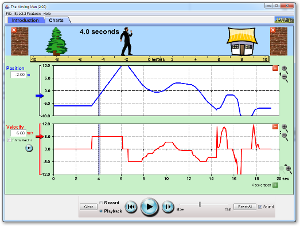year 9 physicS
9K SPEEDING UP
|
In this topic you will learn about how to measure and calculate speed and acceleration. You will draw graphs to show speed and learn about how engineers design things to go fast!
Here are the learning objectives for this topic: I can
I understand
|
useful 9K websites
Try Doc Brown´s 9K Quiz.
Look at the Bitesize revision section on speed, distance and time. You can have a look forward to IGCSE level in Unit P1. Try these motion graph practise questions from physics classroom. Answer on paper and then check on the website. Here is a harder quiz from McGraw-Hill |
TRY THE MOVING MAN SIMULATION
Choose his speed and acceleration and watch how he moves! This program also draws motion graphs.

